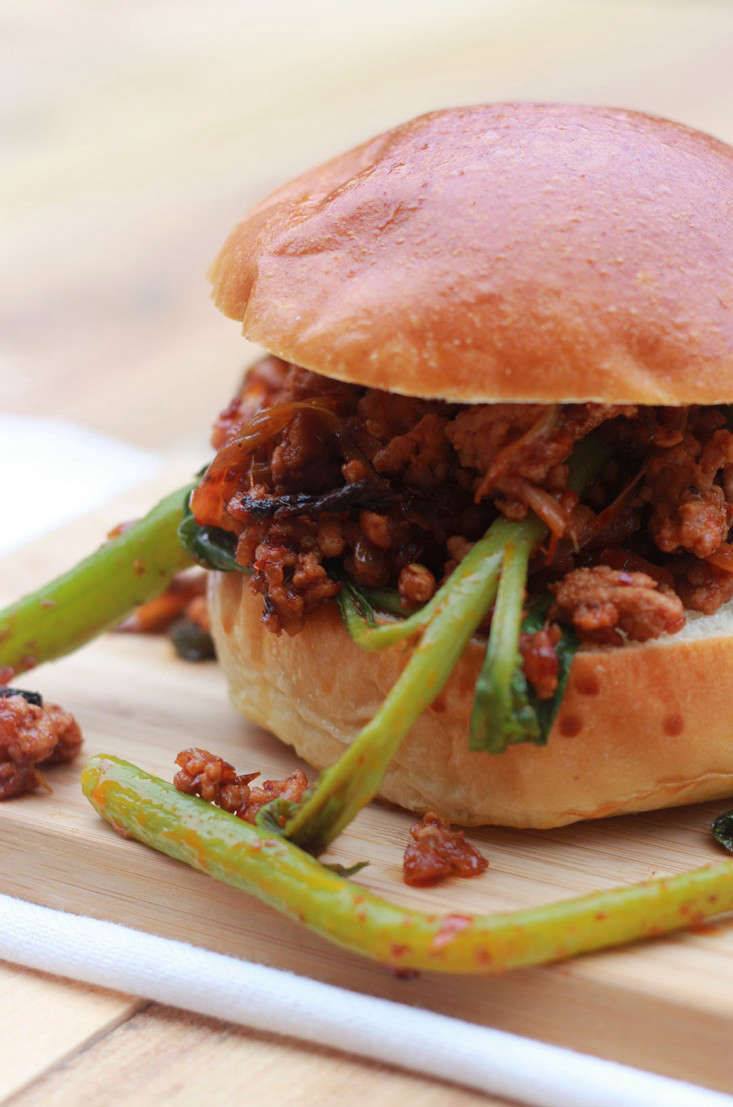
Photography by Marie Viljoen except where noted.
In late summer, pokeweed (Phytolacca americana) drips with clusters of glossy black berries on fuchsia-pink stalks. Read on for a recipe for Pokeweed Sloppy Josephines (a spicy version of Sloppy Joes).
Horses and cows have been poisoned by pokeweed. Pigs that have snouted out the root have been sickened or killed.
So who eats a plant with such a dubious resumé? Native Americans knew this, and ate poke every season (toxic parts of the plant were used medicinally).
Pokeweed is a prolific and widespread perennial, rising from nothing to six feet or more in a matter of months.
Photograph by Mary Cassidy.
What parts of pokeweed are poisonous?
The edible part of pokeweed is the actively growing green shoot or stem, before the plant has branched.
Sam Thayer the respected wild foods author who has debunked a foraging myth or two and who cultivates pokeweed in his Wisconsin orchard makes the most sense on the subject What matters is whether...
...or not the shoot is still a vigorously growing meristem Think of asparagus the shoot we eat is the meristem of the plant that turns into a feathery fern with wait for it poisonous berries
I often spot new pokeweed patches in winter. I mark the spot and come back in mid spring.
Harvestable shoots (center) appear around the same time as young lambs quarters, dandelion flowers, garlic mustard flowers, and elm samara (seeds). Well-wrapped, they last well for a week or longer in the refrigerator.
In Kentucky, Sheila Neal-Leger, a fifth grade science teacher, remembers her mother getting excited and slamming on the brakes when she would see poke coming up in fence rows.
After being washed and dried in front of a fan the shoots were floured, egg-washed, and floured again “and fried in lard, oil, or whatever fat we had at the time.” Her mother picked poke stems up to three feet high, as long as they were not “pithy.” These were cut into six-to-eight-inch pieces and fried like the shoots.
To prepare the stems, peel off any red to be on the safe side.
When I first started to eat pokeweed, I used a time-honored folk method of boiling the vegetable until it was completely dead. It was good, and it was a mess.
I am wiser now, and still cook the stems in boiling water, but just once, till tender, then I toss them with strong flavors like anchovy and roasted lemon, fish sauce and lime juice, or serve them cool with miso-mayonnaise.
Pokeweed stems are a succulent filling for an omelet seasoned with red pepper. Dressed with a beurre blanc and slipped under the broiler they are a simple and sophisticated side dish or main course.
With other spring greens, poke gives substance to spring ribolitta, good for the occasional chilly evening that the season still throws at us.
Serves two, or makes four buns. In a large skillet heat the oil over medium heat. Remove the lid and cook another five until the mixture begins to brown. Add the pokeweed stems and turn gently to coat them with sauce.
Pokeweed Sloppy Josephinas